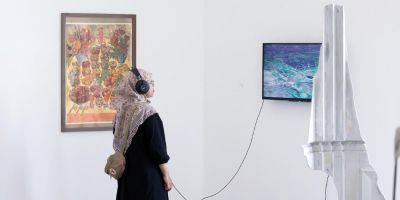Professor Stephen Westland on colour's complex role in human psychology

Professor Stephen Westland has been interviewed by Bluebeam to explain why colour can affect how humans experience the spaces around them.
“Colour is a deceptively simple topic,” Professory Westland says. “And it’s a very nice topic to teach because people love talking about colour, so everyone thinks they know something about it. But once you start really getting into colour, no matter what background you have when you approach it, you start to find that it’s stretching you in areas that you feel uncomfortable in.”
Professor Westland explains that designers have to confront “a bit of neuroscience and a bit of psychology” when explaining the complex role colour plays in designing spaces.
Why does colour matter?
Part of the answer, says Professor Westland, lies in the way our brains process light. “Until 20 years ago, we thought the eye only had one function, which was sight,” Westland said. “Then we discovered a new set of photoreceptors in the eye, which sent signals to the center of the brain—the hypothalamus—that controls our hormones and our body temperature, rather than to the back of the brain—the occipital lobe—where vision takes place.”
“Studies show that if we use dynamic lighting to alter the colour of light within an office space, for example, people will become less tired and can concentrate for longer”, says Professor Westland.
Despite its many benefits, Westland said that colour is one of the least-studied aspects of the physical environment, even though it is one of the most frequently discussed by the actual users of built spaces. Westland said that architects, designers and builders need to think more about the impact of colour when they begin to design and construct a new structure.
Read the full article here.




